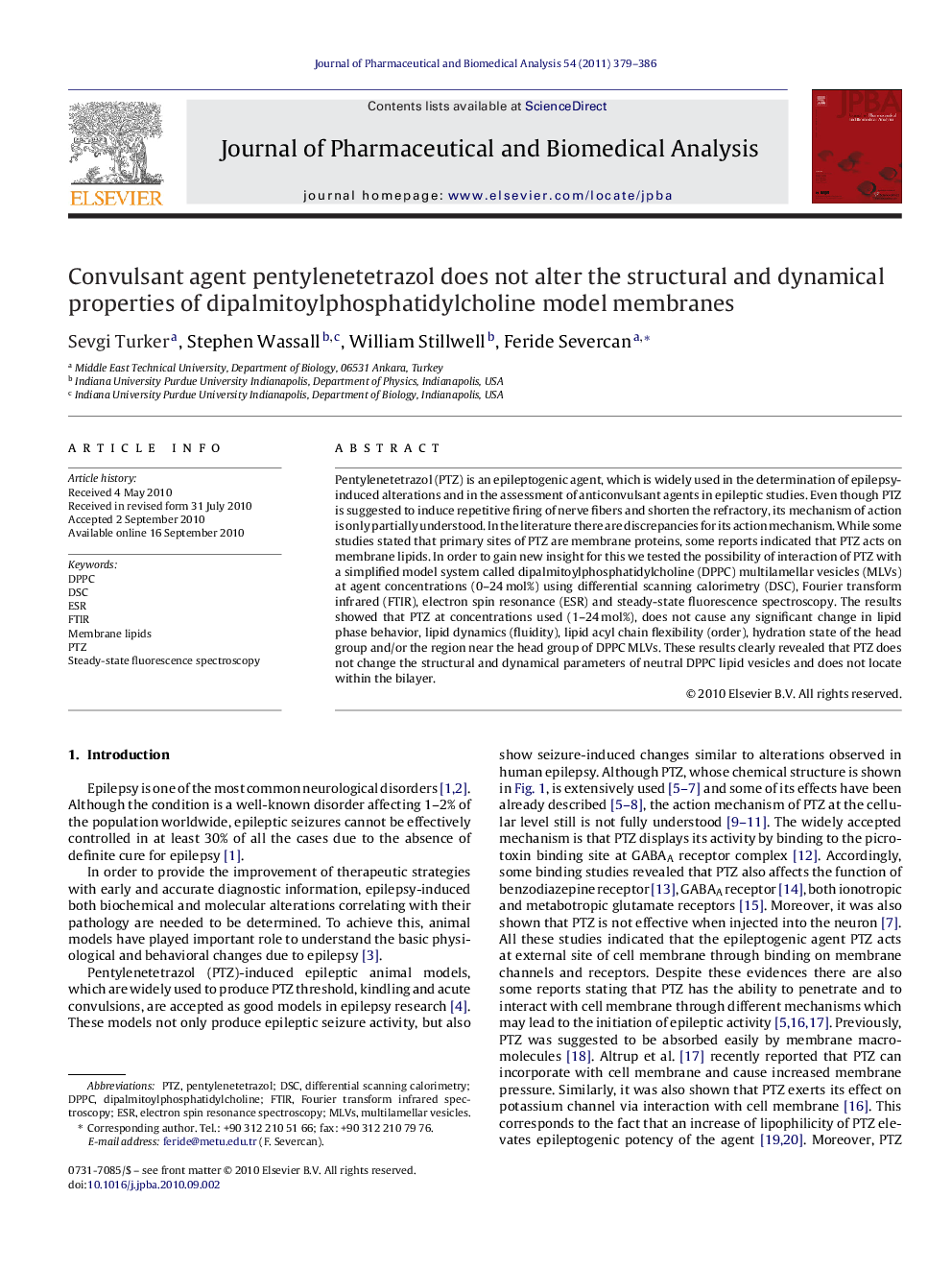| Article ID | Journal | Published Year | Pages | File Type |
|---|---|---|---|---|
| 1223081 | Journal of Pharmaceutical and Biomedical Analysis | 2011 | 8 Pages |
Pentylenetetrazol (PTZ) is an epileptogenic agent, which is widely used in the determination of epilepsy-induced alterations and in the assessment of anticonvulsant agents in epileptic studies. Even though PTZ is suggested to induce repetitive firing of nerve fibers and shorten the refractory, its mechanism of action is only partially understood. In the literature there are discrepancies for its action mechanism. While some studies stated that primary sites of PTZ are membrane proteins, some reports indicated that PTZ acts on membrane lipids. In order to gain new insight for this we tested the possibility of interaction of PTZ with a simplified model system called dipalmitoylphosphatidylcholine (DPPC) multilamellar vesicles (MLVs) at agent concentrations (0–24 mol%) using differential scanning calorimetry (DSC), Fourier transform infrared (FTIR), electron spin resonance (ESR) and steady-state fluorescence spectroscopy. The results showed that PTZ at concentrations used (1–24 mol%), does not cause any significant change in lipid phase behavior, lipid dynamics (fluidity), lipid acyl chain flexibility (order), hydration state of the head group and/or the region near the head group of DPPC MLVs. These results clearly revealed that PTZ does not change the structural and dynamical parameters of neutral DPPC lipid vesicles and does not locate within the bilayer.
